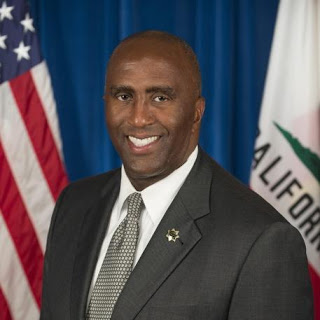
By May S. Ruiz
Beginning this Fall, some kindergartners and first graders in the Pasadena Unified School District (PUSD) parleront Francais when the district adds a third dialect in its Dual Language Immersion Program (DLIP).
According to Hilda Ramirez Horvath, PUSD’s Coordinator for Communications and Community Engagement, “A group of parents approached the district asking about the possibility of starting a French language immersion program based on the success of the Mandarin and Spanish programs the district created about eight years ago.”
“The district superintendent met with them, a series of meetings between staff and parents followed, and an online survey was created to gauge interest,” continues Horvath. “The Board of Education approved opening a DLIP in French a few weeks ago and plans are ongoing to welcome its first Kindergarten and first grade classes for the 2017-2018 school year.”
States Dr. Brian McDonald, PUSD superintendent, “The ability to speak more than one language can enhance brain function, academic performance, and business acumen. As a school system committed to responding to the needs and interests of Pasadena area families, we are expanding opportunities for multilingual education that prepare our students to compete on a global scale.”
Director of Language Assessment & Development Dept. for Pasadena, Hassan Dornayi, is one of the people coordinating this effort of assessment, budgeting and hiring. He says, “After presenting to the board for final approval, and meetings with the community outlining the first steps, we are now moving forward to get ready to unveil this program. We have identified the need to hire three teachers – one French speaker to teach Kindergarten, another French teacher for first grade, and the third instructor to teach the English component. We’re currently accepting applications for these positions and will start the screening process shortly. ”
“We launched our DLIP with Spanish and Mandarin starting with kindergarten in 2008. This class is now in eighth grade and students will be continuing through high school,” Dornayi adds. “It’s one of the programs with an actual secondary component and we’re using this same model for French. We’ve had a lot of success and the community likes the program so we’d like to replicate the same structure with French.”
PUSD is looking to have a total of 40 students – 20 in kindergarten and 20 in first grade – enrolled this Fall in the French DLIP at the Altadena Elementary School. Dornayi says further, “As in our Mandarin and Spanish program, we would like the same class population with half of them dominant in English and the other half in the partner language. We do this by testing the incoming students in their French capabilities to have a better idea of students that have native abilities and those that don’t.”
Helen Chan Hill, Director of Curriculum, is responsible for developing the curriculum for the program. She explains, “When deciding what set of courses we use in a language immersion program we consider: 1) fit for the learning outcomes of the subject; and 2) language of instruction/instructional percentage in each language. For example, balanced literacy is a priority districtwide, so we are currently in search of leveled books and assessment system for informal reading inventory in French since the models call for 90 percent instruction at K, and 80 percent in first grade. This is in exact alignment with our English mainstream priorities, but modified for the language of instruction. We use this template for all programs.”
The school provides all instructional materials to ensure that all students have equitable access to core supplies.
“Since we are still in the research and selection phase, we do not know the specifics of what will be available for students and parents in terms of resources,” reveals Hill. “”However, the majority of our programs have digital components that families can access outside of school, and we also look for resources that are beyond the selected curriculum. We attempt to publish resources on our website so they can be easily found – we reference resources from ACTFL (American Council on Teaching Foreign Languages) whose domains of language acquisition we use for benchmark progress. We also share guiding principles for Dual Language and other such resources that can help a family understand the instructional program and expectations.”
Hill expands, “We expect students, as in all our programs districtwide, to attend fully and engage with the learning. While we are still establishing learning outcomes, we would anticipate students to function at low to mid-novice levels (based on ACTFL’s proficiency levels) by the end of kindergarten year, and mid- to high novice levels by the end of first grade. From parents we would expect streams of communication with their student at home. Whether parents speak or write French or not is not a consideration in our expectations – we simply want them to encourage their student to be involved via communication with the teacher or school.”
“We feel that PUSD offers a robust model of instruction for all its DLIPs, and are placing similar expectations on French,” says Hill. “We have a keen understanding of the teacher skill set required, and have worked hard to establish consistent templates in our current programs that help launch a new one. Additionally, with our emphasis on 21st century learning, the PUSD embraces not only the innovation that comes along with this, but the cultural competency and global citizenship that is much needed in this increasingly connected world of ours.”
America is raising a generation of future job seekers who will not be limited by geographical boundaries. Polyglots will have a definite advantage – PUSD students will be better equipped to occupy their place in a highly competitive global economy


